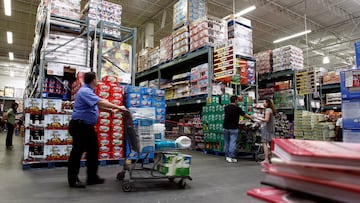FINANCE
What is stagflation? Is it worst than recession?
Stagflation is an economic condition characterised by a combination of stagnant economic growth, high unemployment rates, and high inflation rates.

Growth is expected to slow down to a crawl by the end of the year. Inflation is not falling as far as the Federal Reserve wants. Analysts are worried that these facts are pointing towards one thing: stagflation.
The “data was the worst of both worlds, with growth down (GDP +1.1% down from 2.6% and less than the 1.9% expected) and inflation up (Core PCE up to 4.9% from 4.4% and higher than the 4.7% expected),” noted Chris Zaccarelli, Chief Investment Officer for Independent Advisor Alliance.
What even is stagflation?
Stagflation is a situation where the economy is not growing, but prices are rising, and there is high unemployment.
Stagflation is generally considered worse than a recession because it is a much more challenging economic condition to manage. In a recession, the central bank can lower interest rates to encourage borrowing and spending, which can stimulate economic growth.
However, in stagflation conditions the central bank faces a dilemma because lowering interest rates to stimulate growth may further exacerbate inflation, while raising interest rates to combat inflation may further slow down economic growth and worsen unemployment.
Historical examples of stagflation
The United States had a period of high inflation and high unemployment in the late 1960s and continued throughout the 1970s. The situation was exacerbated by a series of oil shocks, which caused oil prices to rise sharply, leading to increased costs for businesses and consumers. The combination of rising oil prices and inflation led to a decline in consumer spending and investment, which further depressed economic growth.
The government attempted to address the stagflation problem by implementing a combination of policies, including wage and price controls, tax cuts, and increased government spending. These measures were largely unsuccessful in addressing the problems, and the situation continued throughout the 1970s, culminating in the severe recession of the early 1980s.






